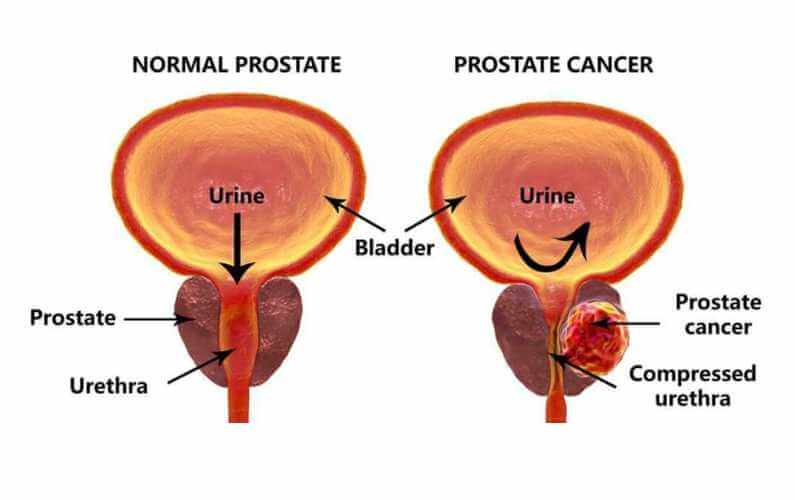Treatment for prostate cancer depends on factors like the cancer’s grade and stage, the patient’s age and overall health, risk level, and personal treatment goals. The options range from observation to surgery and advanced therapies, and the best approach is chosen based on your unique situation.

Treatment Options for Low-Risk Prostate Cancer
1. Active Surveillance
- This is a close-monitoring approach for men with low-risk prostate cancer and no symptoms.
- The cancer isn’t treated immediately. Instead, it’s observed through regular PSA blood tests, rectal exams, and prostate biopsies.
Treatment (such as surgery or therapy) is only started if the cancer begins to grow or spread.
2. Watchful Waiting
- Similar to active surveillance but less intensive.
- It is recommended for older men or those with serious health conditions who may not tolerate aggressive treatments.
- The focus is on symptom relief rather than curing the cancer.
Note: Both of these options help avoid side effects from surgery or radiation, but there is a risk that the cancer may progress and become harder to treat later.
3. Surgery
- Surgical treatments aim to remove the tumor from the prostate gland.
- Surgery is an option for men whose cancer is still contained within the prostate.
- Sometimes, it is combined with other treatments for more advanced stages.
Types of Prostate Surgery
1. Robot-Assisted Laparoscopic Prostatectomy (RALP):
- This is a minimally invasive surgery where a robotic system assists the surgeon through small abdominal incisions.
- The robot helps remove the prostate with precision.
- RALP is now the most commonly used surgical method.
2. Retropubic Open Radical Prostatectomy:
- Involves a larger incision in the lower abdomen to remove the prostate.
- Less commonly used today, but is still performed in specific situations.
3. Pelvic Lymphadenectomy:
- This procedure checks and removes lymph nodes in the pelvis to see if cancer has spread.
- It may also be done to prevent recurrence after other treatments.
4. Transurethral Resection of the Prostate (TURP):
- A resectoscope is inserted through the urethra to remove prostate tissue.
- Often used to relieve symptoms or for men who aren’t eligible for full prostate removal.
Treatment Options for High-Risk, Advanced, or Metastatic Prostate Cancer
A. Hormone Therapy (Androgen Deprivation Therapy - ADT)
- Prostate cancer cells grow in response to testosterone.
- Hormone therapy reduces or blocks testosterone production, slowing cancer growth.
Two Types of Hormone Therapy

Medications
- Drugs like LHRH or GnRH agonists/antagonists stop the body from making testosterone.
- This approach is temporary and can be reversed if needed.

Surgery
- Involves removal of the testicles (orchiectomy), which permanently lowers testosterone levels.
- It is a permanent form of hormone therapy.
B. Chemotherapy
- Used mainly for cancer that has spread to other parts of the body.
- Chemotherapy drugs kill rapidly dividing cells, including cancer cells.
- Administered via injection or pills, allowing the drugs to circulate throughout the body.
- Often combined with other treatments and is not typically the first option for prostate cancer.
